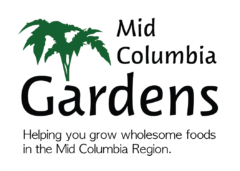The first wave of 850 seeds for the new year were sown yesterday. Many exciting things coming. Here’s how things are shaping up:
I’m planting the indeterminate dwarf tomatoes early this year in order to sell them at a more mature size. I was very impressed by these little plants last year, which do well in pots, standard tomato cages, or square foot gardens. Unlike determinate tomato plants which remain small and deliver all of their crop at once, these continue to produce tomatoes all season, while remaining small and manageable. I have all of the varieties released by the Cross Hemisphere Dwarf Project that I could get my hands on, plus a few heirlooms like New Big Dwarf, Dwarf Champion Improved, and the diminutive, determinate cherry Tiny Tim, which has been a regular customer favorite.
- I’m also planting the peppers earlier and growing them hotter to give them more size than the puny things I grew last year. I’m changing the tagging, using red tags for hot peppers and green tags for sweet. Hopefully that will clear up some of the confusion. I have
- red, orange, and yellow bells
- a sweet cherry pepper
- Giant Aconcagua, which is one of my children’s favorites
- Jimmy Nardello, a very sweet frying pepper
- Jalapeño M, a very mild, though not heatless jalapeño.
- Aji Dulce, a very mild habanero that ripens red
- Habanero, the classic orange flamethrower
- Bhut Jolokia, the Ghost Chile, currently the Guiness record holder for heat.
- a beautiful, variegated Fish pepper plant, often planted as an ornamental, though edible (and hot).

- I’ve committed to providing the following onions, starting March 3rd until sold out. As last year, $2/30 and $3/60. The bundles were very generously packed last year, with up to 80 plants in a 60 plant bundle.
- Walla Walla Sweet, of course
- Ailsa Craig, a very large sweet heirloom
- Copra, which was quite popular last year
- Red Zeppelin, a big sweet red
- Redwing, totally new to me
- There are 120 varieties of tomato on the grow list this year, which I’ll publish as soon as it’s finalized. With a new hoophouse to provide better spring weather protection, and several process improvements, we’re on track to have over 3000 plants for sale at the end of April, with a final production wave showing up mid-May. Larger, stronger, healthier plants than last year is the goal. And everything tagged and separated ahead of time, thanks to a change in the transplant process. Still no chemicals, no pesticides, no substances that are not organic.
- More exciting announcements to come! Stay tuned, and let me know if you have any feedback from last year, or there’s anything you’re looking for. I’m paul@midcolumbiagardens.com.


 December is the month of seed preparation and orders. I’ve reviewed the information I collected in 2011 on which varieties did well and what kind of feedback I got from people who grew them out. Despite the bad weather and poor condition of some of my inventory, there were some good success stories:
December is the month of seed preparation and orders. I’ve reviewed the information I collected in 2011 on which varieties did well and what kind of feedback I got from people who grew them out. Despite the bad weather and poor condition of some of my inventory, there were some good success stories:








